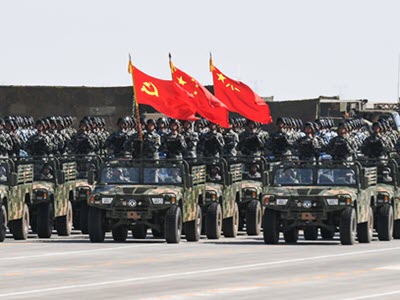The 2022 China Military Power Report: A View from Vietnam
In November 2022 the U.S. Department of Defense released its annual report Military and Security Developments Involving the People’s Republic of China. The report, commonly known as the China Military Power Report, assesses the current trajectory of the PRC’s military and security strategy. Since the report’s release, China has continued to modernize its military capabilities and publicly surveil foreign competitors, presenting a clear risk to the United States and its allies and partners.
The comments below are from Nguyen The Phuong, a PhD candidate in maritime security and naval affairs at the University of New South Wales at the Australian Defence Force Academy.
For comments on China’s rising military power by experts from other countries across the Indo-Pacific, see Regional Voices on the 2022 China Military Power Report.
Nguyen The Phuong
University of New South Wales at the Australian Defence Force Academy
The United States’ 2022 China Military Power Report details the U.S. Department of Defense’s close monitoring of China’s military modernization process. The Vietnam People’s Army (VPA) has also been keeping a careful watch on the PLA. Considering developments in the South China Sea disputes since the early 2010s, the overall battle readiness and technological capabilities of the PLA cause great concern in Vietnam. Moreover, the rapid transformation in both quality and quantity of PLA forces has exponentially increased the power gap between China’s and Vietnam’s militaries. This further complicates strategic calculations, as well as the modernization process of the VPA itself.
Currently, the priority combat environment of the Vietnamese military is the air-sea domain of the South China Sea and its related cyber environment. This is reflected in the VPA’s military modernization motto: “Straight forward to modernity.” Therefore, the interoperability of the various PLA services in the South China Sea has been and will continue to be closely watched. Vietnam’s level of interest, however, depends on different contingencies and their probability, which are divided into two types: gray-zone operations during peacetime and wartime contingencies. In the short to medium term, allocating resources to address gray-zone scenarios will be prioritized. The long-term priority, beyond 2030, is to ensure the construction of a modern military capable of responding to any situation, including an armed conflict.
A war at sea with China in the short to medium term, from Vietnam’s point of view, is highly unlikely. Such a war would be detrimental to Vietnam. The most probable scenario would be a naval conflict in the South China Sea following a potential mass preemptive strike by long-range weapons and cyberattacks to cripple Vietnam’s critical infrastructure and capabilities to strike back. A maritime blockade of Vietnamese outposts in the Spratly Islands is another potential operation that China could undertake.
In both cases, Vietnam would be in a weak position. The PLA’s integrated air defense capability in the South China Sea ensures effective cover of its critical assets in the artificial islands. Moreover, the PLA’s improvements in amphibious attack and antisubmarine warfare capabilities, as well as progress in the development of supersonic anti-ship cruise missiles, render Vietnam’s defense posture in the Spratly Islands highly vulnerable. China could further improve its ability to project power in the South China Sea through investments in the Ream Naval Base and Dara Sakor International Airport in Cambodia.
In the South China Sea, the VPA has been under constant pressure from China’s gray-zone tactics. The overwhelming presence of China’s maritime militia and coast guard have overextended Vietnam’s maritime forces and driven Vietnamese fishers out of their traditional fishing grounds. China will further strengthen its law-enforcement and paramilitary forces by both increasing the number of vessels operating in disputed waters and integrating them into its high-tech network of maritime domain awareness capabilities. Its coast guard, as well as its maritime militia, will become more professional and aggressive.
In addition, China’s artificial islands in the Spratly Islands have played an important role in strengthening Beijing’s de facto control of the disputed waters through the deployment of three-dimensional C4ISR (command, control, communications, computers, intelligence, surveillance, and reconnaissance) capabilities. This negatively affects the deployment and maintenance of the Vietnamese defense posture in maritime hot spots and creates a great advantage for Beijing in peacetime scenarios. China is also trying to construct an integrated air defense system to cover its strategic outposts in the South China Sea. However, with the right investment and the advantage of geography, the VPA could asymmetrically inflict extensive damage on these assets in wartime.
Finally, Vietnam is concerned by China’s modernization of its military through the increasing employment of high-tech technologies, including space, cyber, and autonomous systems. The VPA understands the impact of these components on the battlefield in both peacetime and wartime. High-tech weapon systems offer the PLA new ways of conducting coercive and kinetic activities, thereby further expanding the capability gap in its favor. Given this advantage, it would take considerable time, resources, and determination for the VPA to develop an effective countermeasure.
Nguyen The Phuong is a PhD candidate in maritime security and naval affairs at the University of New South Wales at the Australian Defence Force Academy.


